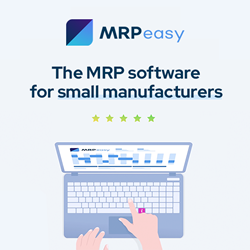Paint is one part of the manufacturing process that happens in nearly every industry, but it's one thing that many people don't think twice about. That is largely due to the fact that making paint is a complicated chemical process.
 Ensuring That Paint is Safe for Your Products
Ensuring That Paint is Safe for Your Products

Emily Folk | Conservation Folks
Paint is one part of the manufacturing process that happens in nearly every industry, but it's one thing that many people don't think twice about. That is largely due to the fact that making paint is a complicated chemical process. How can you tell if the paint that you're using is safe for your products?
The Basics of Paint
While the creation of paint might be a complicated chemical process, it can be broken down into four basic components:
- Pigments
- Binders
- Solvents
- Additives
Each of the four components is vital to creating a successful batch of paint — if one of them isn't present in the right amounts, the finished product will bubble, crack or won't stick to the products at all. Each of these components can also contain harmful chemicals that could be dangerous, depending on how each of your products are used.
Low VOC Paints
Some traditional paints contain what is known as volatile organic compounds or VOCs. These chemicals can release toxic gasses once the paint is applied to a variety of surfaces. These VOCs can be dangerous to pets, children and adults, depending on where the paint is used.
One way to ensure that your paint is safe is to choose low VOC paints, or paints that don't contain heavy metals that could leach out of the products and potentially harm the consumers.
Artificial vs Organic Paints
As a manufacturer, there are two types of paint that you can choose from — paints made with natural components, and paints made from artificial ones.
Paints made from non-organic chemicals tend to be more durable and require less maintenance than their organic alternatives, but they can also run the risk of having higher levels of VOCs or other toxic chemicals. Organic paints might not have the durability, but they are safer for products that are going to be exposed to children and pets.
The paint you choose will depend on your product, the amount of durability your product requires, and the kind of clients who will be regularly handling your finished product. It's important to make this decision for each product as it's being produced — you won't want to use non-organic paints on a crib, for example, even though it's a product that requires high durability.
Testing is Important
Testing a new product is important, regardless of whether it is painted or not. When you're using paint on a new product, chemical testing is important to ensure the safety of the paint that is being used. Every paint being used, whether it's a brand that you've used for years or a new type of paint that you haven't tried before, should be tested thoroughly to ensure that it won't release any harmful gasses and that it doesn't contain any harmful chemicals that a teething pet or child could consume inadvertently.
Regardless of your industry you will use paint at some point. The goal isn't to avoid using paint, it is to ensure that whatever products you're creating are safe for the consumers that are using them. Look at each of your painted products and decide which kind of paint is ideal for each application. Some cases might not be as straight forward as you might think — some products need both durability and safety, such as the crib we mentioned before, so choosing a paint that is made with natural products might not be as durable but it will be safer for the small humans that will be inhabiting the crib.
Choosing a paint shouldn't be a blanket decision, and not all paints are created equal. Take the time to research each paint you'll be using, and perform your own in-house testing to ensure that the paint you're using is safe for your customers and their intended applications.
The content & opinions in this article are the author’s and do not necessarily represent the views of ManufacturingTomorrow
Featured Product

